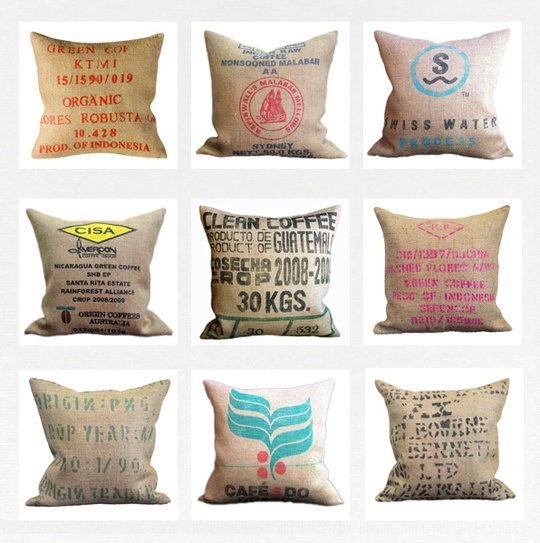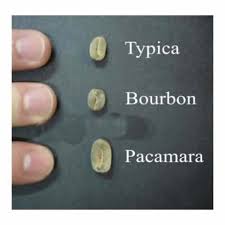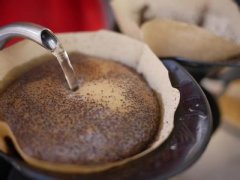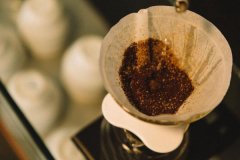Why is the name of individual coffee so long? What is the charm of individual coffee?

For professional baristas, please follow the coffee workshop (Wechat official account cafe_style)
We often see some English words, numbers, or strange unknown names on the names of coffee products. Friends who have just come into contact with boutique coffee must have such confusion, such as Kenya AA, Ethiopia / Yega Xuefei / cocoa processing plant G1, Guatemala SHB, Indonesia Sumatra / Lindong Mantenin 20 mesh. How on earth do you understand these combinations? What does each of them mean?
The most common coffee naming equation:
Country + producing area + variety name + manor name (treatment plant, group name) + treatment mode + level.
Through naming, you can directly understand the basic flavor and quality of this coffee, so today I would like to explain to you that these seemingly complex names represent important information about each type of coffee.
Name of the port of export
For example: Santos, Brazil, Mocha, Yemen. In addition, the coffee produced in Ethiopia is also known as "Haramoka".

Name the original species and variety.
When Arabica species and Robusta species are shipped at the same time, the variety name will be marked under the country name.
For example: Camelon-Arabica, Uganda-Robsta and so on.
Varieties of coffee will also have different flavors, and rare varieties will be specially marked.
For example: Bourbon, Pacamara, Geisha.
Mountain naming
For example: blue Mountain in Jamaica, Mount Kilimanjaro in Tanzania. Wait.
Exporter, group name

For example: Costa Rica Namonita, Panama Caesar Louise. Wait.
Grading mode
There are many kinds of coffee, the climate, soil and altitude of each country.. They are all different, so there will be different ways of grading in different countries. These grading standards mainly come from the following key points:
1. Differences in the appearance of raw beans, such as size, shape, defect ratio.
two。 The environment in which raw beans grow and their effects, such as altitude and hardness.
3. After baking, it is judged by the quality of the cup.
Proportion of defective beans
The less the proportion of defective beans, the higher the grade of beans. Such as Ethiopia, Peru
Ethiopia has a raw bean grade of G1--G5. G1--G4 is the fine grade of washing and tanning.
(in the past few years, the highest mark for sun-dried beans was only G3, but in recent years, the origin will be based on the needs of importers, so there will also be G1 and G2 sun-dried beans.)
Defective beans include: unripe beans, fermented beans, shell beans, broken beans. Etc.
Coffee bean size
A sieve used to screen the size of coffee beans
Such as Indonesia, Kenya, Colombia.
More than 18 mesh (about 0.7cm) is Supremo, and the following is Excelso.
The item represents the diameter of the coffee bean, one item is 1x64 inch, (1 inch = 25.4mm)
Kenya's grading is based on the size of beans, supplemented by cup quality and bean weight.
For example, the best quality is AA PLUS (AA+), followed by AA and AB.... Wait. In addition, PB is classified by appearance, Peaberry (round beans).
The height of altitude.
The large temperature difference between day and night at high altitude, low temperature, short sunshine, high humidity and other factors will make coffee grow more slowly, grow fruits with higher density, and taste sour and fragrant. Because the cost of picking and transportation is higher, the higher the altitude of coffee is, the higher the price is. The major coffee-producing countries in Central America are classified by altitude. According to the elevation of the cultivated land, it can be divided into three, four, seven and so on, and the grade standards vary from country to country. For example, Mexico and Honduras use three levels, while Guatemala uses seven levels.
Cup test quality
Such as Brazil.
Brazil is currently the largest coffee producer in the world. However, among the coffee-producing countries in Central and South America, Brazil's production altitude is on the low side, and the terrain is flat, lack of micro-climate, industrial policy is large and cheap, so the coffee beans produced are soft, and there are not many high-quality coffee. Compared with other producing areas, the taste is smoother, so it is a good choice to mix other coffee.
Because it is distributed all over the country and the solid quality varies, it has its own standard. After the cup test, the taste is rated according to five grades: Strictly Soft is extremely supple, Soft is supple, Softish is slightly supple, Hardish is not palatable, and Rioy has iodine choking flavor.
Having said so much, do you have a better understanding of how the name of coffee is named? Let's review the equation again.
The most common coffee naming equation:
Country + producing area + variety name + manor name (treatment plant, group name) + treatment mode + level.
FINAL QUIZ:
Important Notice :
前街咖啡 FrontStreet Coffee has moved to new addredd:
FrontStreet Coffee Address: 315,Donghua East Road,GuangZhou
Tel:020 38364473
- Prev

How would you like your coffee? How to taste the different flavor and taste of hand-made coffee?
Professional baristas Please follow the Coffee Workshop (official Wechat account cafe_style) with the rise of the third wave of boutique coffee culture in recent years, more and more people are fond of individual coffee. The so-called single product coffee refers to the coffee beans processed from the coffee fruit from a single producing area, not by excessive baking, but by a shallow baking method, showing the original taste of coffee.
- Next

[introduction to hand-brewing coffee] how to judge: is hand-brewing coffee a gimmick?
At the beginning, some people are interested in making coffee, and there is more than one, which is really gratifying. But after they are interested, they often ask how to rush, which bothers me, because I don't seem to be able to explain it for three or five minutes. Share the knowledge I have learned when I am free. If there is anything wrong, I hope all the experts will come back more often.
Related
- Detailed explanation of Jadeite planting Land in Panamanian Jadeite Manor introduction to the grading system of Jadeite competitive bidding, Red bid, Green bid and Rose Summer
- Story of Coffee planting in Brenka region of Costa Rica Stonehenge Manor anaerobic heavy honey treatment of flavor mouth
- What's on the barrel of Blue Mountain Coffee beans?
- Can American coffee also pull flowers? How to use hot American style to pull out a good-looking pattern?
- Can you make a cold extract with coffee beans? What is the right proportion for cold-extracted coffee formula?
- Indonesian PWN Gold Mandrine Coffee Origin Features Flavor How to Chong? Mandolin coffee is American.
- A brief introduction to the flavor characteristics of Brazilian yellow bourbon coffee beans
- What is the effect of different water quality on the flavor of cold-extracted coffee? What kind of water is best for brewing coffee?
- Why do you think of Rose Summer whenever you mention Panamanian coffee?
- Introduction to the characteristics of authentic blue mountain coffee bean producing areas? What is the CIB Coffee Authority in Jamaica?

